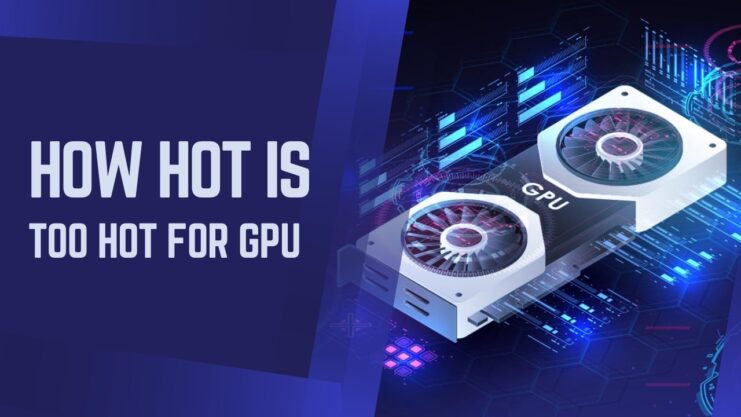If your computer is experiencing lag, crashes, or subpar performance from your GPU, overheating could be the culprit.
High temperatures can negatively impact the performance and longevity of a graphics card.
This article will guide you through understanding the heat capacity of a graphics card and how to identify if your GPU is overheating.
Additionally, we will offer solutions to resolve potential performance issues caused by overheating.
Why Do GPUs Heat Up?
When electronic devices receive a continuous supply of electricity, their temperature increases.
According to thermodynamics, energy transfers can never be entirely efficient. For GPUs, electrical resistance in components like capacitors and transistors is responsible for most of the heat generation.
Efficiency refers to the ratio of desired output (GPU’s output signal or calculations) to required input (wattage supplied via the PSU); the majority of the input is converted into heat.
How Are GPUs Cooled?
Each manufacturer employs their own unique GPU and VRAM cooling technique. Naturally, these methods have their own pros and cons.
To better understand the differences between various cooling methods, let’s examine the three most common GPU cooling types:
Open Air Cooling
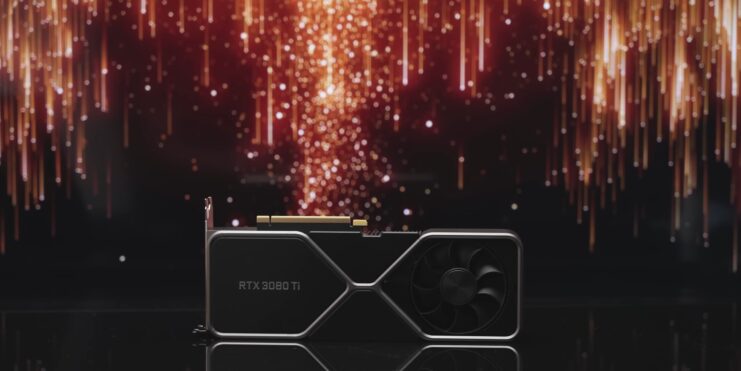
An air-cooled GPU typically uses one to three fans to cool an aluminum heatsink.
The heatsink absorbs thermal energy from multiple heat-pipes, which contact the GPU chip through direct-contact core-pipes or a copper-block/baseplate. Most single-fan GPUs use a blower fan to cool internal components, pushing air laterally over the graphics card and out the back of the PC. An open-air cooling system draws in surrounding air and forces it through the sides and backplate of the graphics card.
For instance, the MSI Gaming X Trio variant of the Nvidia RTX 3080 Ti (what’s Ti?) is an air-cooled GPU. This model uses three TORX 4.0 85 mm fans with double-ball bearings and blades connected (in pairs) on the outer ring.
These fans cool the 2.9-slot heatsink, which receives heat from precision-machined core-pipes. The Gaming X Trio also has thermal pads for additional heat dissipation on specific board components (like VRAM). Open Air GPU Cooling directs air onto the GPU’s radiator, which then exhausts into the case. As a result, a hot GPU can cause the temperature inside your case to rise significantly.
Depending on the GPU, or its board-partner models, the cooling methods can vary drastically.
Blower Style Air Cooling
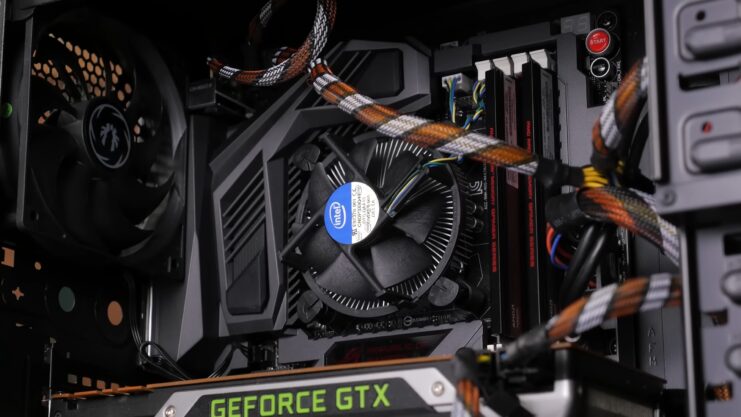
The primary distinction between Blower Style and Open Air Style Cooling lies in the airflow through the GPU’s radiator and its exhaust direction.
A Blower Style Cooler draws in air and propels it horizontally through the radiator. The air is trapped inside the radiator and can only exit through the GPU’s back I/O shield, meaning hot air from the GPU is directly expelled from the case.
AIO Hybrid Cooling
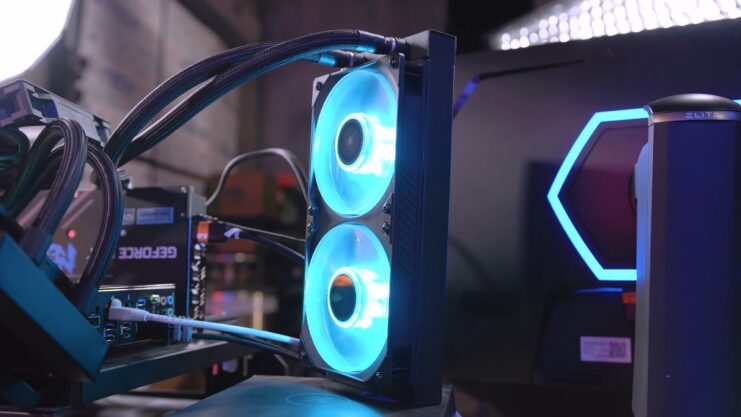
This cooling approach employs both air and liquid cooling. Fans are used to cool the heatsink as well as an All-in-One (AIO) liquid cooling solution’s radiator.
This method involves dissipating heat through a liquid coolant circulated between a cold plate and the radiator.
The EVGA Hybrid, for instance, is an example of this hybrid cooling system. This (AIB) board-partner model utilizes three hydrodynamic bearing fans: two on the 240mm radiator and one on the aluminum heatsink. It also features an all-copper base plate that directly contacts the water block.
Liquid Cooling
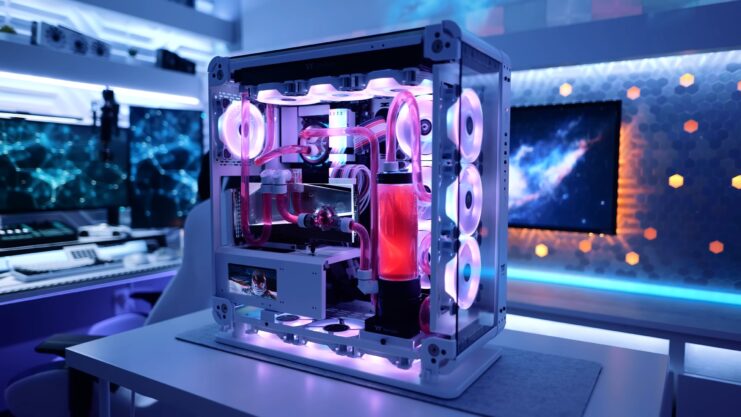
Finally, we have liquid-cooled GPUs. This cooling method is quite simple: a cooling liquid directly extracts heat from the graphics card components.
While this is arguably the most effective cooling method, it is also the most expensive and can be challenging to install.
The ASUS EKWB offers an acrylic water block with a split-flow cooling engine.
It features a nickel-plated copper cold plate, EPDM O-rings (for improved sealing), and brass standoffs for easier installation.
Factors Affecting Your GPU’s Thermals
The GPU, like any PC hardware component, is influenced by various internal and external factors.
Ignoring any obvious manufacturing defects, let’s examine other variables that might impact your GPU’s temperature.
Ambient Temperature
The room’s ambient temperature where the PC is located can affect the graphics card’s thermals.
Heat must be transferred to a cooler environment for proper dissipation. If the surrounding temperature is too high, heat transfer will be impeded.
According to tests by Puget Systems, for every 1°C (~ 1.8°F) increase in ambient temperature, the GPU temperature rises between 0.5° and 1° C, affecting its fan speed by 6.5 RPM.
PC Form Factor & PSU
The smaller the case, the fewer case fans can be installed, and the more cramped the hardware components will be.
A Small Form Factor (SFF) case, for instance, has a volume of only 20 liters or less. Consequently, heat from hardware components may transfer to other parts.
Furthermore, a power supply unit’s (PSU) efficiency rating can affect the heat it generates. If a PSU lacks an 80 Plus rating (meaning its efficiency is below 80%), over 20% of the current is lost as heat.
Depending on the case size and PSU cooling, this heat may be channeled towards other components, including the GPU.
Note that a low-voltage PSU can also cause GPU instability.
Case Cooling
The case’s temperature varies depending on its hardware and the cooling potential (and placement) of its case fans.
The internal airflow must be designed so that the air produced by the blowers can efficiently transport hot air away from components and out of the case.
This is achieved using a combination of fans optimized for airflow or static pressure.
Airflow-optimized case fans excel at circulating air out of the case, making them great exhaust options. In contrast, static pressure fans are designed to push air through radiators or heatsinks, as they are less affected by resistance or impedance.
How to Monitor Your GPU’s Temperature
Keeping track of your graphics card’s temperature is simple and can be done through various methods.
Windows 10 Task Manager
In Windows 10, open the task manager and navigate to the “Performance” tab. Here, selecting the GPU on the left will display its usage levels and temperature.
Note that you’ll need an updated Windows 10 Version (Build Version 18963 or higher), a dedicated GPU, and an updated Graphics Driver (WDDM > 2.4) for the GPU temperature to display.
Using Your GPU’s System Monitoring Software
For a more detailed, real-time view of your GPU’s thermals, you can use the system monitoring software provided by manufacturers.
With this software, you can also adjust clock speeds, fan speeds, and even set a target/max GPU temperature.
Examples of such software for the aforementioned aftermarket GPU models include: MSI’s Center, ASUS’s GPU Tweak II, and EVGA’s Precision X1.
Using 3rd Party Software
For monitoring more specific metrics beyond the basics displayed by most manufacturer-included system-monitoring software, you can install a diagnostics application.
A reliable and accurate example of such software is HWiNFO, which can also be downloaded for free.
Average GPU Temperatures
Let’s explore what is considered a normal operating temperature for most GPUs:
- Idle: 30° to 45° C (86° to 113° F)
- Load: 65° to 85° C (149° to 185° F)
- GPU Rendering: 70° to 80° C (158° F to 176° F)
- Gaming: 60° to 70° C (140° to 158° F)
Maintaining temperatures within this range should ensure your GPU operates at its maximum potential.
What Temperature Is Too Hot for a GPU?
Now that we know the average thermal measurements for a GPU, let’s examine their max temperature thresholds.
This metric varies between GPU manufacturers since thermal sensors are placed in different areas of the GPU, resulting in different measurements.
Nvidia
Nvidia’s graphics cards typically maintain temperatures below 85 degrees Celsius (185° F), although this depends on the GPU model.
For example, the GeForce RTX 30 Series GPUs have a maximum listed temperature of 93° C (199.4° F).
AMD
AMD’s max temperatures are generally higher than Nvidia’s.
AMD uses AVFS (Adaptive Voltage and Frequency Scaling), a network of multiple data points that more accurately measure die temperature across various areas, instead of relying on a single sensor.
While ideal GPU temperatures under load are usually between 65° and 85° Celsius (149° to 185° F), AMD GPUs (like the Radeon RX 5700 or 6000 Series) can safely reach temperatures as high as 110 degrees Celsius (230° F).
These GPUs will continue to increase in clock speeds until one of their sensors reaches the 110-degree junction. This measurement can be seen even during moderate rendering or gaming use.
Note that the junction temperature is the hottest temperature among multiple sensors. Unless the monitoring software you’re using explicitly reports junction temperatures, the temperatures you see should be significantly lower than the maximum of 110° C.
What Happens When Your GPU Gets Too Hot?
When a GPU gets too hot, it can cause damage to the hardware components. However, most modern graphics cards have built-in thermal protection mechanisms to prevent this from happening. The GPU will first throttle its performance to reduce the load on the overheating components. If the temperatures continue to increase, a forced system shutdown will occur to prevent permanent hardware damage.
To lower the GPU’s temperature, it is important to find the source of the heating issue. This can be achieved by opening or cleaning the case, checking if the GPU fans are running properly, adjusting overclock settings or fan speeds, adding case fans, replacing the thermal paste of the GPU, or lowering the ambient temperature of the environment.
Cleaning the PC is important as the accumulation of dust and grime can clog air vents and cause the internal components to retain heat. Checking if the GPU fans are running properly is also crucial as faulty components or obstructions can cause the fan to stop spinning properly.
Adjusting overclock settings or fan speeds can reduce pressure on the GPU while adding case fans can significantly lower its temperature. Replacing the thermal paste is also a good idea, as factory-applied thermal paste can degrade over time, causing the GPU to overheat.
Finally, lowering the ambient temperature of the environment can help reduce the GPU’s temperature. This can be achieved by using an air-conditioner or placing the PC in the vicinity of a fan.
FAQ
How often should I check my GPU temperature?
It is recommended to check your GPU temperature regularly, especially when performing tasks that require high GPU usage such as gaming, video rendering, or mining. You can monitor your GPU temperature using various software tools or through the Windows Task Manager.
Can high GPU temperatures damage my graphics card?
Yes, high GPU temperatures can damage your graphics card over time. Prolonged exposure to high temperatures can cause thermal stress, which can degrade or even destroy the GPU’s components. It can also cause the thermal paste to dry out, leading to poor heat dissipation and higher temperatures.
What is the ideal temperature for a GPU?
The ideal temperature for a GPU at idle should be between 30-45°C (86-113°F) and under load, it should not exceed 85°C (185°F) for most modern GPUs. However, the maximum temperature varies depending on the GPU model and manufacturer.
What is thermal throttling?
Thermal throttling is a mechanism used by GPUs to prevent overheating. When the GPU reaches a certain temperature, it automatically reduces its clock speed to decrease its power consumption and heat output, which results in decreased performance.
Can adding more case fans lower GPU temperatures?
Yes, adding more case fans can help to lower GPU temperatures by improving the airflow inside the case. This allows for better heat dissipation from the GPU and other components. However, it is important to ensure that the case fans are properly positioned and connected to avoid interfering with each other’s airflow.
Should I replace the thermal paste on my GPU?
If your GPU is running hotter than usual, it may be a sign that the thermal paste has dried out or degraded. Replacing the thermal paste can help to improve heat dissipation and lower GPU temperatures. However, it is important to follow proper procedures and use the appropriate thermal paste for your GPU to avoid damaging it.
Can overclocking increase GPU temperatures?
Yes, overclocking can increase GPU temperatures as it puts more strain on the GPU’s components, resulting in higher power consumption and heat output. It is important to monitor GPU temperatures when overclocking and ensure that they stay within safe limits.
Can using liquid cooling lower GPU temperatures?
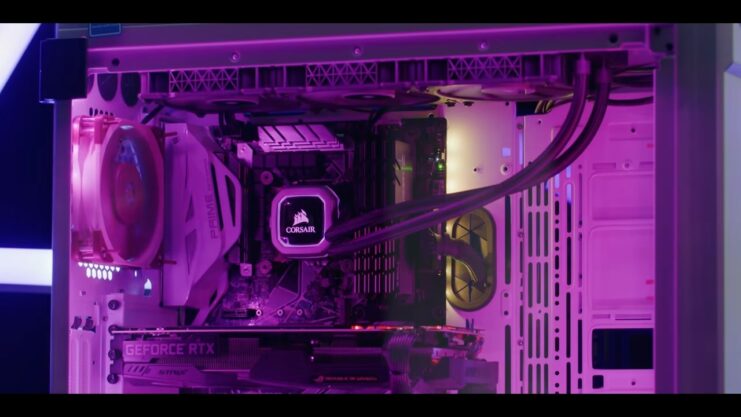
Yes, liquid cooling can lower GPU temperatures by providing more efficient heat dissipation than air cooling. However, liquid cooling is more expensive and requires more maintenance than air cooling. It is also important to ensure that the liquid cooling system is properly installed and maintained to avoid any leaks or damage to the GPU.
Can a high ambient temperature affect GPU temperatures?
Yes, a high ambient temperature can affect GPU temperatures as it can hinder heat dissipation from the GPU and other components. It is important to maintain a cool environment for your PC, especially during hot weather or in poorly ventilated areas.
Should I use a GPU stress test to check for high temperatures?
Yes, using a GPU stress test can help to check for high temperatures by putting the GPU under maximum load and monitoring its temperature. This can help to identify any potential cooling issues and ensure that the GPU is running at safe temperatures. However, it is important to follow proper procedures and use reliable stress test software to avoid damaging the GPU.
Conclusion
In conclusion, maintaining optimal temperatures for your GPU is crucial for maximizing its performance and avoiding damage to the hardware. The three main types of cooling for GPUs include blower style air cooling, AIO hybrid cooling, and liquid cooling. Various factors such as ambient temperature, PC form factor, and case cooling can impact the GPU’s thermals.
To check your GPU’s temperature, you can use the Windows 10 task manager, your GPU’s system monitoring software, or 3rd party software. Average GPU temperatures range from 30° to 45° C (86° to 113° F) while idle and 65° to 85° C (149° to 185° F) while under load.
If your GPU gets too hot, it will throttle performance and, if temperatures continue to increase, a forced system shutdown will commence. To lower your GPU’s temperature, you can open/clean the case, check if the GPU fans are running, adjust overclock settings or fan speeds, add case-fans, replace the thermal paste of your GPU, or lower the ambient temperature of your PC’s environment.

